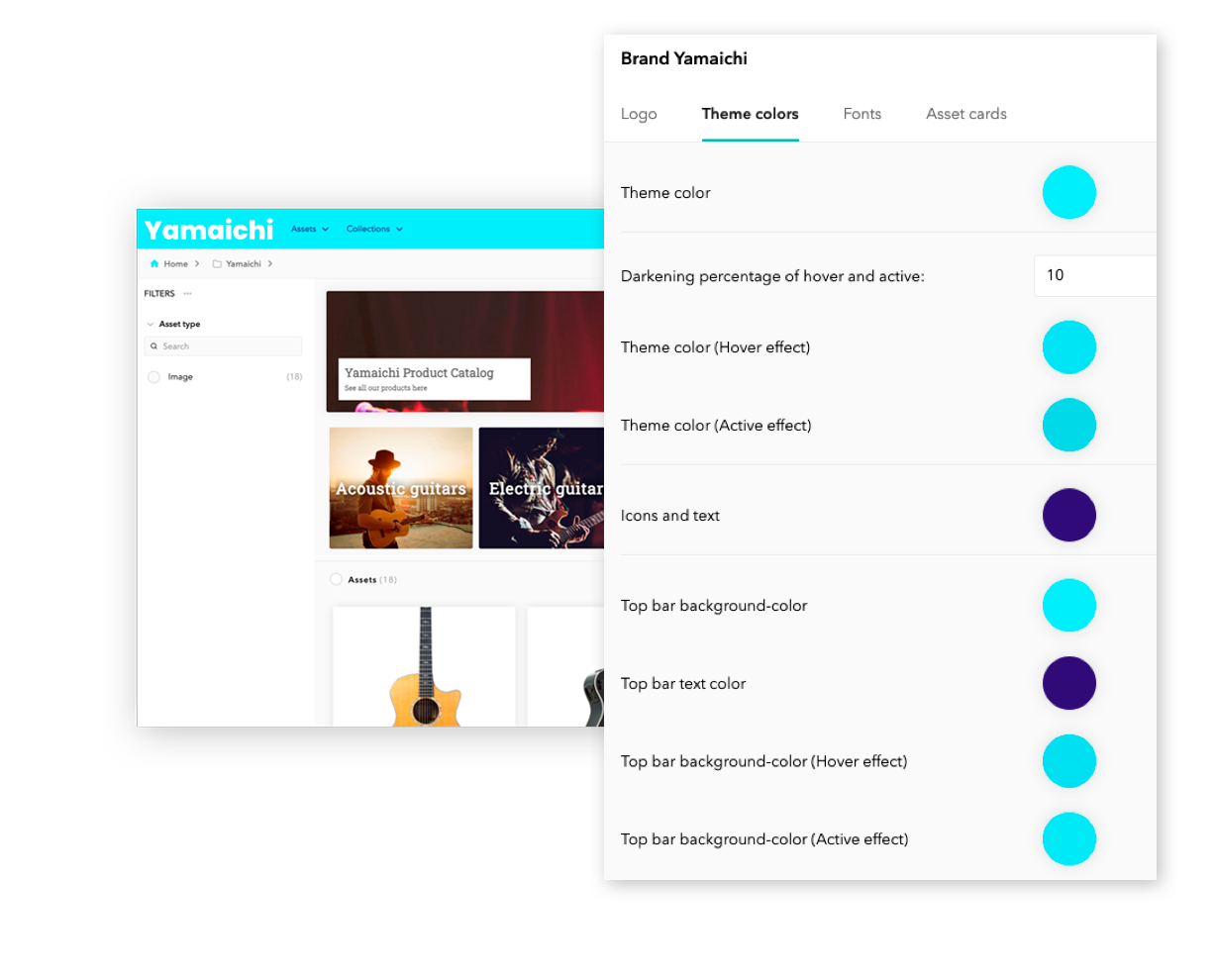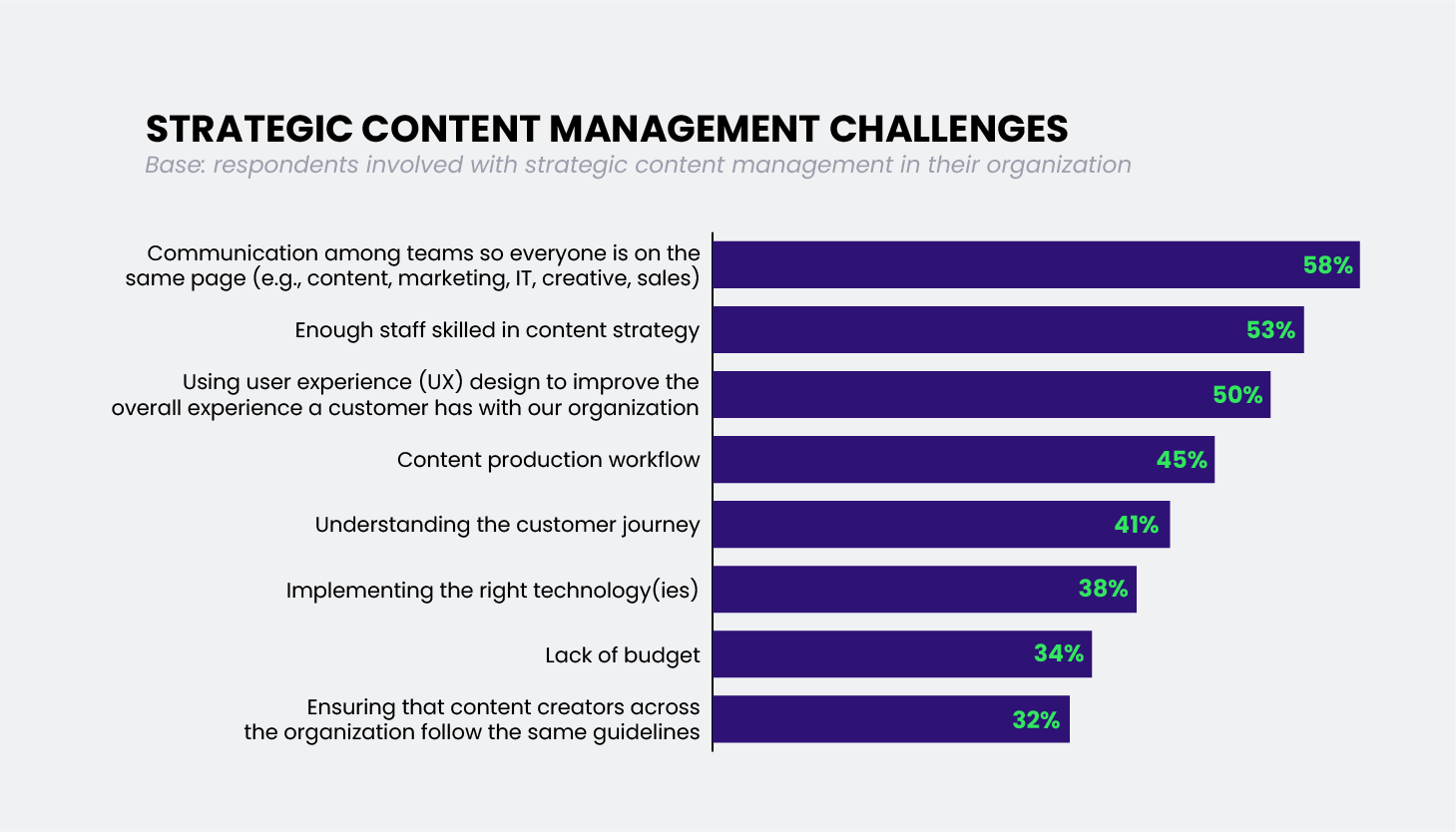E-commerce companies are lagging behind without a digital asset management (DAM) system.
Why?
As the need for e-commerce companies to push more diverse content across all channels and verticals grows, so does the need to manage it all.
The more content you have, the more complex it becomes.
Imagine the following scenario:
You’re the CMO of a fast-growing e-commerce company that sells luxury designer clothing.
The spring and summer season is approaching, and you need to update your website with the latest promotions and collections.
Your marketing team is faced with the following challenges:
-
Collecting product content from suppliers can be a difficult puzzle to figure out. It involves a plethora of tasks – calling them up, sending emails, quality-checking product images manually, requesting missing materials, renaming files to match product numbers, and sending files to colleagues for review.
It’s a tedious process, and if you have hundreds of suppliers – it can be overwhelming.
-
Many supplier contracts come with penalties or fees if they fail to provide content that meets the defined standards.
But the manual process of collecting content can leave you stranded. How do you know if the supplier has met your requirements? In a lot of cases – you don’t.
This not only results in wasting time and labor but also delays the time-to-market. It’s like paying twice for the same work.
Once you use a DAM platform, you streamline all the processes above.
All your e-commerce sites and channels are automatically updated in real-time with the right versions of product images and descriptions.
This is all thanks to DAMs central repository of all digital assets, the “single source of truth” – where all users can collaborate on managing, editing and distributing the right digital assets, at the right time.
Want to read more about how a DAM can help drive growth for e-commerce companies?
We’ve outlined the 5 biggest reasons as to why e-commerce companies need a DAM system in order to scale all their content operations and processes.
-
Table of contents
-
3 DAM benefits for e-commerce business
-
5 reasons why e-commerce companies need DAM:
-
1. Boosts brand consistency
-
2. Streamlines marketing processes
-
3. Reduces time to market
-
4. Improves collaboration and asset sharing
-
5. Gives you insights into asset usage
-
-
3 DAM benefits for e-commerce business
There’s tons of benefits of DAM for e-commerce companies. Here’s three of the largest advantages:
-
Increased efficiency and productivity: DAM will streamline your most vital content processes. Like organizing, managing and sharing digital assets. With one central repository, e-commerce companies can easily search for and find the assets they need, when they need it (saving hours).
-
Better brand management: Since DAM is a single source of truth for all assets, it will ensure that all content like product images adhere to a company’s brand guidelines. The result? Higher brand integrity across sales channels and platforms.
-
Improved management of your team(s): DAM makes sure that everyone remains on the same page with the same access to all approved content. This enables seamless communication and collaboration across teams and departments, no matter if it’s marketing or sales.
5 reasons why e-commerce companies need DAM
From better brand management to insightful analytics, read more about the 5 biggest reasons why e-commerce companies can benefit from a DAM below.
Ensure brand consistency across all online channels
A DAM system will help any e-commerce company looking to create those consistent brand experiences across all channels.
How?
By keeping track of all approved assets in one place and through features like brand portals.
These portals allow retailers to organize their assets by brand or product line, which increases their level of control over their brand and results in more consistency.
For international retailers, brand and product managers need a streamlined interface that regional marketers can use to access the right assets to manage their brand lines.
With DAM, brand portals enable brand and product managers to have a dedicated area where they can manage the assets that belong to their area: Including colors, logos, and fonts – you name it.
That ensures a consistent product experience, no matter where they are.
Brand portals also allow retailers to create different layouts for different brands, providing individual brand experiences by product or user group.
By organizing assets into understandable views, brand portals can help retailers maintain a consistent communication process through two ways:
-
Enabling the entire company to have the same access to marketing collateral and
-
Creating campaign collections to share specific assets with the right target audiences.
Streamline marketing processes and workflows
There are lots of moving pieces to keep track of when managing all the content belonging to your company.
Content creation, editing, and distribution across a variety of media can rapidly become daunting, particularly for businesses that sell products online.
Additionally, efficient content management will be crucial in 2023, particularly for larger enterprises that want to implement omnichannel marketing tactics (that are expected by your customers).
You need to make sure everything is going smoothly because there are so many touchpoints where your content is interacting with the consumer.
But one of the key advantages of a DAM system is that it makes it easier for businesses to distribute the right, approved content. This helps you avoid making false claims and off-label marketing, ensuring that confusion is avoided and legal exposure is minimized.
And you already know how important it is to keep your brand’s credibility.
DAM systems can aid in ensuring that the marketing team always conveys the correct message.
This is especially crucial in light of the difficulties that many marketers encounter.
For instance, according to a recent study, 32% of B2B marketers find it difficult to ensure that the content they distribute adheres to the same standards.
Companies can streamline the approval procedure and make it simpler to guarantee that the right piece of marketing collateral is used each and every time by putting in place a DAM system.
Reduce time to market
Retailers of today don’t have the time to spend hours searching for the right product images or checking to see if the right product information is live on the main website.
Implementing a DAM system and setting it up with the right taxonomy has numerous benefits. It means that updating your website and marketing materials can be done quickly, precisely, and with ease.
The result?
Significantly reducing time to market for your products.
This is because one of the main capabilities any DAM should have is optimizing your content distribution process. By ensuring that your assets are repurposed and delivered efficiently, you can maintain a consistent brand image and in the end, attract more customers.
A DAM system also allows you to distribute content across multiple channels simultaneously, ensuring that your brand assets remain visible and accessible. This improved visibility can expand your target audience and, ultimately, e-commerce revenue.
For example, the retailing industry is particularly well-suited to DAM systems, given the volume of assets, employees spread out across different area codes and distribution channels.
With DAM, retailers can guarantee that only the correct assets are delivered to the right channels, tailored to that specific location and language.
Improve collaboration and sharing of digital assets
Better communication, collaboration and sharing is another perk that e-commerce retailers get with DAM. Through the tool they can much easier work together with each other and external stakeholders in one, strategic place.
E-commerce marketers can easily tag their content with metadata in order to improve the way people search and find content – making it easier to update their websites with the right version of a product image.
Adding on, DAM enables users to add the right access permissions to all content, when it comes to the sharing, downloading, formatting and visibility of assets.
-
To dumb it down:
-
Sharing: DAM helps limit the distribution of certain assets and protects them, making sure they aren’t wrongfully used – which can as a result damage the brand reputation
-
Downloading: You can easily set permissions that prevent unauthorized downloading of content.
-
Formatting: You can specify the resolution or format of an asset to ensure that only certain users can access the original designs.
-
Visibility: Restrict access to assets that do not meet certain visibility requirements, which is important if you need to remove assets from the public eye.
-
All things considered, these restrictions give you the ability to manage who can access, download, and distribute digital content – while preserving the integrity of your e-commerce brand.
Gain insight into digital asset usage
Many DAMs also include content analytics that give you insights into which assets are viewed, downloaded and shared.
Tracking asset engagement and usage can also help e-commerce companies understand where certain assets are located on the website.
What you’re left with is knowing which assets are the most popular amongst your customers – which can help retailers further improve their marketing strategies and further personalize and customize their content.
Collecting this type of data can enhance the reputation of your brand.
You gain valuable insights that enable you to determine the optimal timing and channels for sharing your content with your audience, ultimately leading to an improved brand experience.
Conclusion
Today, 72% of the most successful businesses use e-commerce marketing automation tech in their day-to-day operations.
It makes sense, as these types of tools can provide e-commerce brands benefits like increased productivity and efficiency, boosted brand management and in general improved management of all your teams when it comes to managing digital assets and marketing material.
In this article, we’ve outlined 5 reasons as to why e-commerce companies can reach greater success by implementing a DAM:
1. It helps to ensure brand consistency
2. It streamlines marketing processes
3. It reduces time to market
4. It improves coloration
5. It provides valuable analytics
Want to learn more about how your e-commerce business can benefit from Digizuite DAM?
Contact us today to book a personalized demo. Alternatively, you can try Digizuite for free.
-
Resources you’ll love:










